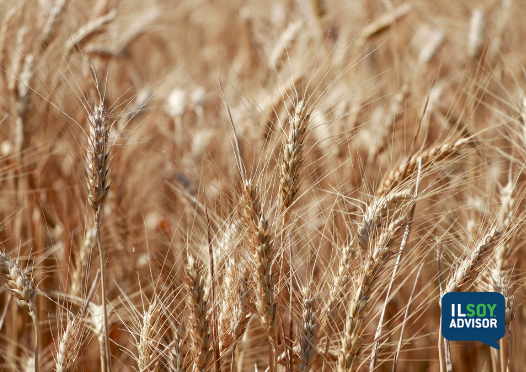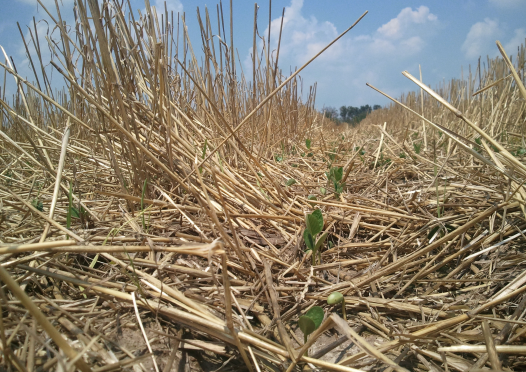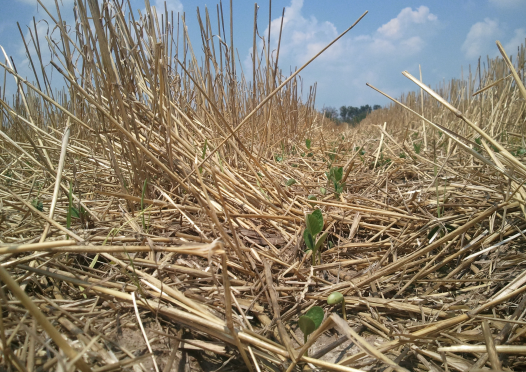ILSOYADVISOR POST
Agronomy: Variety Selection for Double-Crop Soybeans
Sourcing quality seed—seed with the genetic potential to maximize production in a specific region, and adapted to modern management systems and other agronomic factors—is a very important consideration for all producers. While varietal considerations are usually high on the list of priorities for full-season crops, the importance of selecting soybean varieties for placement in double-crop situations does not always rank as highly on the seed selection radar.
Reasons for this might result from a combination of factors such as a limited amount of double-crop acres the producer intends to plant in comparison to total soybean acres, limited variety testing information from double-crop or late planting date scenarios, or lack of confidence in double-crop production due to the uncertainty of weather conditions.
Although the late planting date of double-crop soybeans will normally result in lower yields compared to full-season beans, advances in soybean genetics, planting equipment and other technologies have made it possible to regularly achieve respectable yields when you have good management and favorable weather.
When selecting soybean varieties for double-crop environments, the standard practices applied to evaluating any seed purchase still apply. High yield potential and other agronomic characteristics should be considered. (And ordering in advance to secure the seed necessary for the double-crop is just as important as it is for full season needs.)
Because the length of the growing season will be among the most limiting factors in double-crop systems, maturity selection is very important. To maximize yield potential, it is widely recommended that a later, full-season variety for a given area be utilized for double-cropping. This has been a standard for many years, as a variety that is too early will not achieve sufficient vegetative growth/plant height to maximize potential yield, and utilizing a variety that might be considered among the latest for a particular region might put the crop at risk for frost damage in most years when planted following wheat.
While a suitable “later full-season” variety is usually the best choice, if the planting date is excessively late (maybe after July 10), University of Kentucky research indicates that reducing relative maturity by .5 to 1.0 can reduce the risk of frost damage. For example, if a 4.3 maturity is a standard choice, a 3.8 might be a better choice if planting is delayed outside your normal window.
With the recent development of some earlier wheat varieties and opportunities to harvest high moisture wheat, which allow double-crop soybeans to be planted earlier, additional adjustments and options for varietal maturity will need to be considered. In addition, increasing seeding rates by 10-15% for double-crop is also recommended. This will help to achieve canopy closure as soon as possible to conserve moisture and reduce weed competition, and with the late-planted soybeans usually having less vegetative growth, additional plants per acre will help to offset yield lost to reduced plant height.
As improved soybean genetics have been developed, planting date recommendations are shifting earlier. While this might not seem readily important to double-crop situations, the ability of these genetics to withstand early season stress has no doubt resulted in better adaptability to other stresses throughout the growing season that will benefit double-crop situations as well.
While continued research and evaluation will be necessary to fine tune recommendations in the future, opportunities to utilize wheat and double-crop soybeans as a profitable management option are becoming more widely available. Growers who choose the right variety and add sound management practices for both the wheat and double-crop soybeans help increase the chances of success with this rotational system.

John Pike is a research agronomist at the University of Illinois Dixon Springs Agricultural Center. He is involved in research efforts on soil fertility, nutrient management, pest management and cover crops for corn, soybeans and wheat. Contact him at jpike@illinois.edu.




Comments
Add new comment